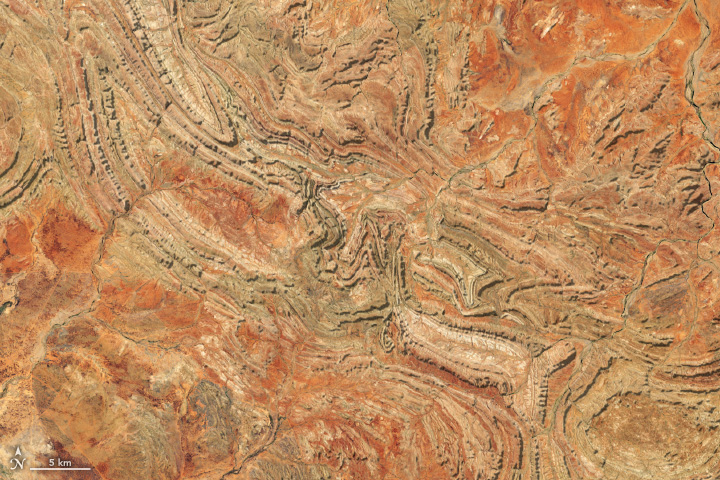- Home
- Missions
- Data
- Communications
- People
- The Earth Observer Newsletter




Recent Imagery
You will be directed to the NASA Visible Earth webpage when you select Images by Mission below, or click on the images at right that are randomly generated to represent four out of all possible topics.
You are here
Total Ozone Mapping Spectrometer-Earth Probe (TOMS-EP)

Status:
Completed
Mission Category:
Other
Launch Date: July 2, 1996
The Total Ozone Mapping Spectrometer, launched onboard an Earth Probe Satellite (TOMS-EP), continued NASA’s long-term daily mapping of the global distribution of the Earth’s atmospheric ozone. TOMS-EP made high-resolution measurements of the total column amount of ozone from space. These measurements began when the instrument was aboard NASA’s Nimbus-7 satellite (1978) and the Russian Meteor-3 satellite (1994).
The TOMS instrument has mapped in detail the global ozone distribution as well as the Antarctic ’ozone hole’, which forms September through November of each year. In addition to ozone, TOMS has measured sulfur dioxide released in volcanic eruptions. The U.S. Federal Aviation Administration (FAA) is studying ways to use these measurements to detect volcanic ash clouds that are hazardous to commercial aviation.
Ozone, a molecule made up of three oxygen atoms, shields life on Earth from the harmful effects of the ultraviolet radiation of the Sun. The increased amounts of ultraviolet radiation of the Sun. The increased amounts of ultraviolet radiation that would reach the Earth’s surface because of ozone depletion could raise the incidence of skin cancer and cataracts in humans, harm crops, and interfere with marine life.
Researchers face two crucial problems in ozone studies-finding a slow, long-term trend among a variety of short-term trends, and ascertaining how much of the change in global ozone is due to human activities and how much is attributable to natural atmospheric processes. In order to separate these factors, scientists must record data over at least a complete 11-year solar cycle. TOMS instruments aboard the Nimbus-7 and Meteor-3 satellites have proved invaluable in meeting this requirement.
The TOMS instrument is a second-generation backscatter ultraviolet ozone sounder. TOMS can measure ’total column ozone’-the total amount of ozone in a ’column’ of air from the Earth’s surface to the top of the atmosphere-under all daytime observing and geophysical conditions. TOMS observations cover the near ultraviolet region of the electromagnetic spectrum, where sunlight is absorbed only partially by ozone.
TOMS-EP measured total ozone by observing both incoming solar energy and backscattered ultraviolet (UV) radiation at six wavelengths. ’Backscattered’ radiation is solar radiation that has penetrated to the Earth’s lower atmosphere and is then scattered by air molecules and clouds back through the stratosphere to the satellite sensors. Along that path, a fraction of the UV is absorbed by ozone. By comparing the amount of backscattered radiation to observations of incoming solar energy at identical wavelengths, scientists can calculate the Earth’s albedo-the ratio of light reflected by Earth compared to that it receives. Changes in albedo at the selected wavelengths can be used to derive the amount of ozone above the surface.
TOMS made measurements every 8 seconds, each covering 30 to 125 miles (50 to 200 kilometers) wide on the ground, strung along a line perpendicular to the motion of the satellite. Almost 200,000 daily measurements covered every single spot on the Earth except areas near one of the poles, where the Sun remains close to or below the horizon during the entire 24-hour period.
The extremely high quality of TOMS ozone data has also helped scientists in detecting small, but steady, long-term damage to the ozone layer over several parts of the globe, including most of the heavily populated areas in the northern mid-latitudes. This discovery led to the curtailment of the production of ozone-depleting chemicals through an international treaty signed in Montreal in the 1980s. To ensure that ozone data will be available throughout the next decade, NASA will continue the TOMS program using U.S. and foreign launches.
The TOMS program is managed by NASA’s Goddard Space Flight Center, Greenbelt, MD.
Key Total Ozone Mapping Spectrometer-Earth Probe Facts
| Mission/Portal Page: | http://science.nasa.gov/missions/toms/ |
|---|---|
| Instruments: |
OMI (Ozone Monitoring Instrument) |
| Project Scientist(s): |
Robert Douglas Hudson |
Relevant Science Focus Areas:
- Atmospheric Composition
- Carbon Cycle, Ecosystems, and Biogeochemistry
Relevant Science Questions:
- How does the Earth system respond to natural and human-induced changes?
- How is the global Earth system changing?
- How will the Earth system change in the future?
